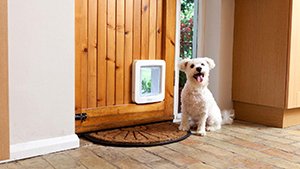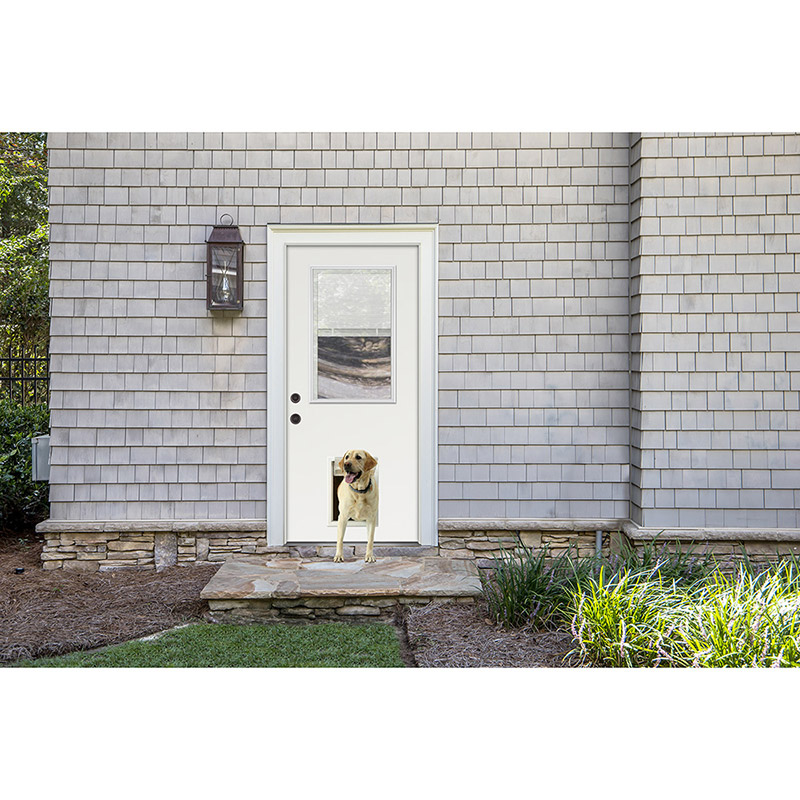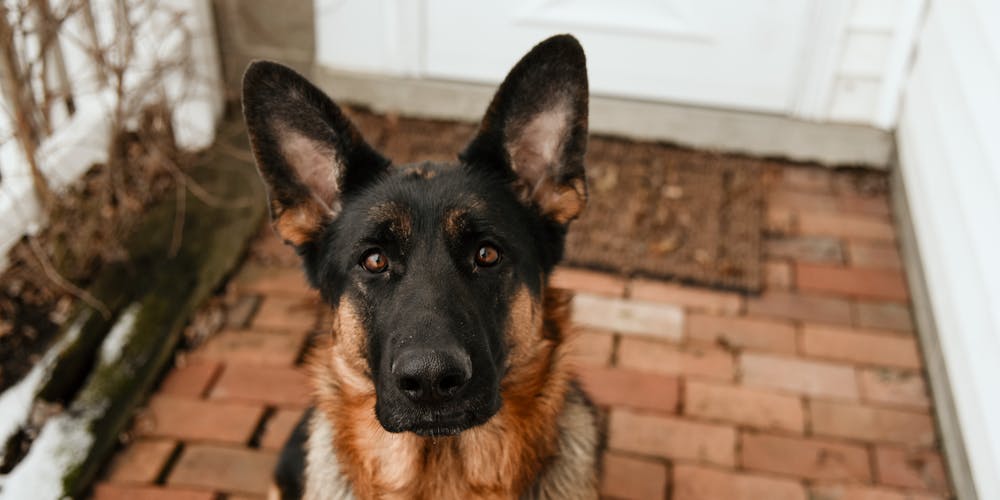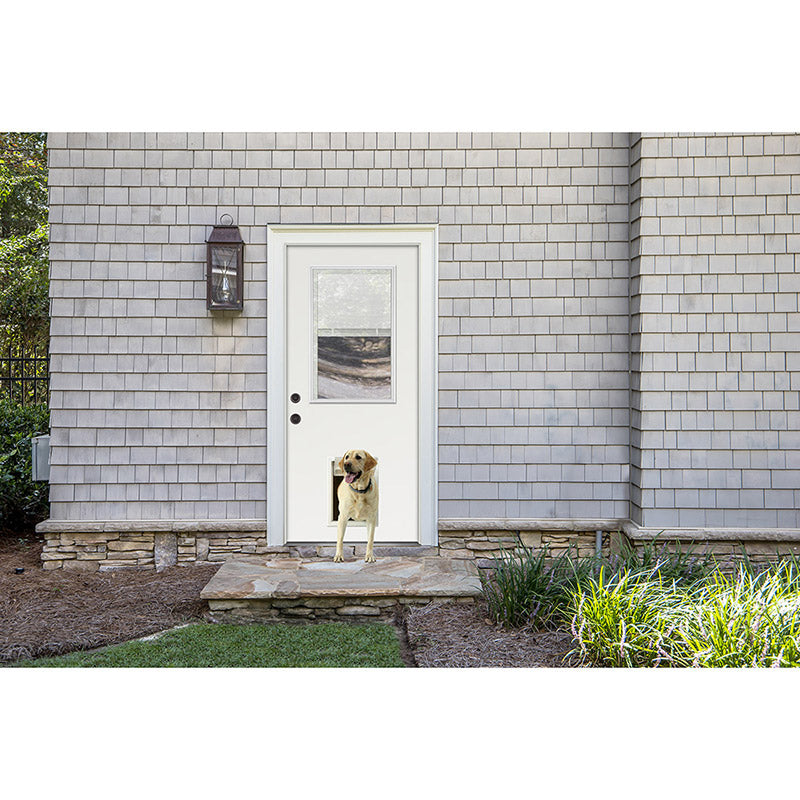Pets are an integral part of our lives, bringing joy, love, and companionship into our homes. It's only natural that we want to give them the freedom to come and go as they please. This is where pet doors come in – a practical solution for both pet owners and their furry friends. However, with so many options available on the market, choosing the right one can be overwhelming. In this comprehensive guide, we will walk you through everything you need to know to select the perfect pet door for your needs.
Choosing the Right Pet Door for Your Needs

When it comes to selecting a pet door, there are several factors to consider to ensure the perfect fit for both you and your pet. From the type and size of the door to location and security features, each aspect plays a crucial role in making the right decision. Let's dive into each consideration in more detail.
Types of Pet Doors

Before diving into specific considerations, it's essential to understand the different types of pet doors available on the market. There are three main types: in-wall pet doors, patio pet doors, and electronic pet doors.
- In-Wall Pet Doors: As the name suggests, these doors are installed directly into a wall or door, creating a permanent opening for your pet. They offer a secure and weather-resistant option and are suitable for both indoor and outdoor use. In-wall pet doors usually have a flap or panel that your pet can push open to enter or exit.
- Patio Pet Doors: Designed for sliding glass doors, patio pet doors provide easy access to a patio or backyard. They are typically made of clear plastic or tempered glass and feature a flap or panel that your pet can push open. Unlike in-wall pet doors, patio pet doors do not require any permanent installation, making them a great option for renters.
- Electronic Pet Doors: These doors use an electronic sensor to detect your pet's presence and automatically open and close the door. They offer added convenience, especially for busy pet owners, and can be programmed with specific access times and frequencies. Electronic pet doors also come with additional security features, such as a locking mechanism or collar sensors, to ensure only your pet can access the door.
Materials and Durability
The material of the pet door plays a significant role in its durability and longevity. The most common materials used for pet doors are plastic, vinyl, aluminum, and wood. Each has its own set of pros and cons.
- Plastic: Plastic pet doors are lightweight, affordable, and easy to install. However, they may not hold up well against harsh weather conditions, and some pets may chew or scratch them, resulting in damage.
- Vinyl: Vinyl pet doors offer better durability than their plastic counterparts, making them ideal for larger and more active pets. They are also weather-resistant and energy-efficient, but they can be more expensive.
- Aluminum: Aluminum pet doors are sturdy and can withstand extreme weather conditions. They are also resistant to chewing and scratching, making them a suitable option for all types of pets. However, they can be on the pricier side compared to other materials.
- Wood: Wood pet doors have a classic and elegant look. They are also durable and offer good insulation. However, they require regular maintenance to prevent warping and damage from moisture.
When selecting the material, consider your pet's behavior and the climate in your area. If you have an active or destructive pet, opt for a sturdier material like aluminum or vinyl. For areas with harsh weather conditions, choose a material that can withstand extreme temperatures and precipitation.
Location and Installation
Another critical factor to consider is the location where you want to install the pet door. This will depend on your home's layout and your pet's needs. For example, if you have a yard or patio, patio pet doors are an excellent choice. If your pet prefers to go in and out frequently, an electronic pet door will save you the hassle of constantly opening and closing doors.
When it comes to installation, keep in mind that in-wall and patio pet doors require permanent installation, whereas electronic pet doors are usually mounted onto existing doors. It's recommended to seek professional help for installation, especially for in-wall pet doors, to ensure proper and secure placement.
Security Features
Security is a top concern for pet owners when considering a pet door. After all, we want to protect our homes and pets from potential intruders. Fortunately, most pet doors come with various security features to give you peace of mind.
Firstly, consider a pet door with a locking mechanism, such as a slide-in panel or a flap with a lock. This can prevent unwanted animals or even burglars from entering your home through the pet door. Some electronic pet doors also come with collar sensors, ensuring only your pet can open the door.
Another essential security feature to consider is insulation. A well-insulated pet door not only keeps your pet comfortable but also helps maintain the temperature inside your home. Look for energy-efficient options that have multiple flaps or a weather-resistant seal to prevent drafts.
Energy Efficiency
As mentioned earlier, energy efficiency is an important factor to consider when choosing a pet door. A poorly insulated pet door can lead to high energy bills as it allows air to escape and enter your home. Look for pet doors with multiple flaps or a weather-resistant seal to minimize heat loss or gain.
In addition to insulation, the size of the pet door can also affect its energy efficiency. A door that is too big for your pet can result in a larger opening, allowing more air to pass through. Measure your pet's height and width and choose a door that fits just right to reduce energy loss.
Training Your Pet to Use a Pet Door
Once you have selected and installed the perfect pet door, it's time to train your pet to use it. For some pets, this may be a simple process, while others may require more patience and training.
Start by introducing your pet to the pet door by holding the flap open and encouraging them to go through. Use treats or toys to entice them and praise them when they go through successfully. You can also place their food or water bowl on the other side of the pet door to encourage them to use it.
If your pet is hesitant or afraid, take it slow and be patient. Never force your pet to go through the door as it can cause them to develop a fear or aversion towards it. With time and positive reinforcement, your pet will learn to use the pet door confidently.
Troubleshooting Common Issues

Even with proper training and installation, some common issues may arise with pet doors. These include:
- Flap getting stuck: If the flap gets stuck, check for any debris or obstacles and clear them. You may also need to lubricate the flap's hinges to ensure smooth movement.
- Pets not using the door: If your pet refuses to use the pet door, it could be due to fear or discomfort. Take it slow and continue training, and if the issue persists, consider consulting a professional trainer or behaviorist.
- Drafts or air leaks: If you notice drafts or air leaks around the pet door, check for any gaps or cracks and seal them with weatherstripping or caulk.
If these troubleshooting tips do not resolve the issue, it may be time to seek professional help or consider replacing the pet door.
Maintaining Your Pet Door

To ensure your pet door lasts for years to come, regular maintenance is crucial. Here are some tips to keep your pet door in top shape:
- Cleaning: Regularly clean the pet door, especially the flap, to remove dirt, debris, and any lingering odors. Use a mild detergent and warm water, and avoid using harsh chemicals that may damage the material.
- Inspection: Check the pet door regularly for any wear and tear, cracks, or damage. Replace any worn-out parts or repair any damages immediately to prevent further issues.
- Lubrication: If your pet door has hinges or springs, lubricate them with a silicone-based spray to ensure smooth movement.
Additional Considerations
Aside from the main factors mentioned above, there are a few additional considerations to keep in mind when selecting a pet door:
- Number of pets: If you have multiple pets, consider getting a larger pet door or an electronic one that can accommodate all of them.
- Pet's age and health: For older or disabled pets, consider getting a pet door that is lower to the ground for easier access.
- Warranty and return policy: When purchasing a pet door, check for the warranty and return policy to ensure you can get a replacement or refund if needed.
- Noise reduction: Some pet doors come with features like magnets or flaps that reduce noise when closing, which can be helpful for pets that are easily startled.
- Cost: Pet doors can range in price from $20 to over $500, so consider your budget and choose a pet door that meets your needs without breaking the bank.
Conclusion

In conclusion, a pet door offers convenience and freedom for both pet owners and their furry friends. By considering factors such as the type, size, location, security features, and energy efficiency, you can select the perfect pet door that fits your lifestyle and your pet's needs. With proper installation, training, and maintenance, a pet door can be a valuable addition to your home that will bring joy to your pet for years to come.



